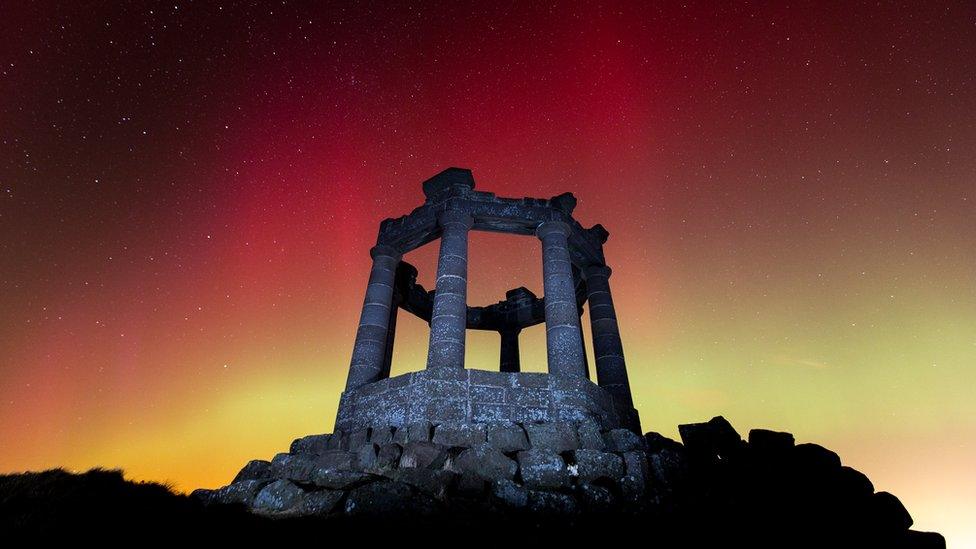Aurora Borealis: Northern Lights over Northern Ireland
- Published
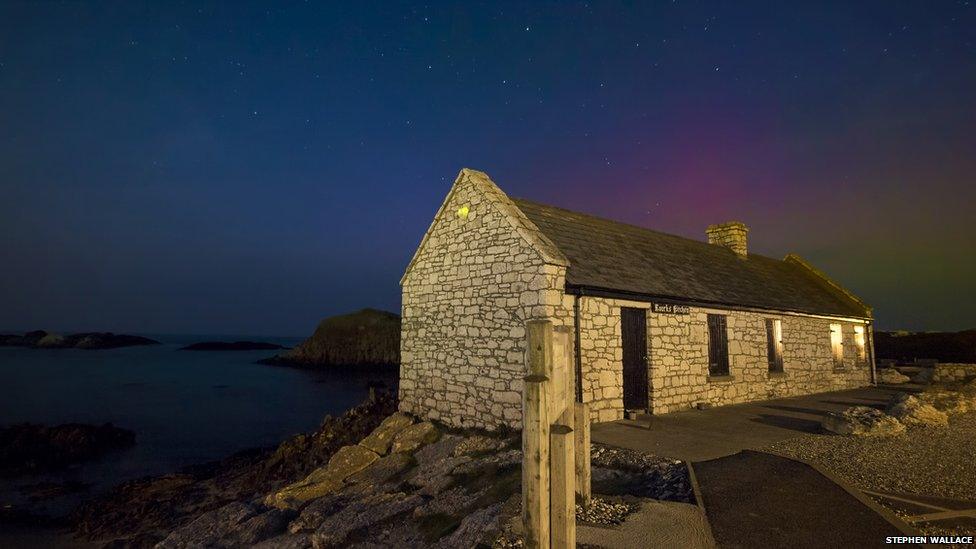
Skywatchers were out in force in Northern Ireland on Friday night to see if they could spot the aurora borealis. Stephen Wallace took this photograph at Ballintoy, on the County Antrim coast.
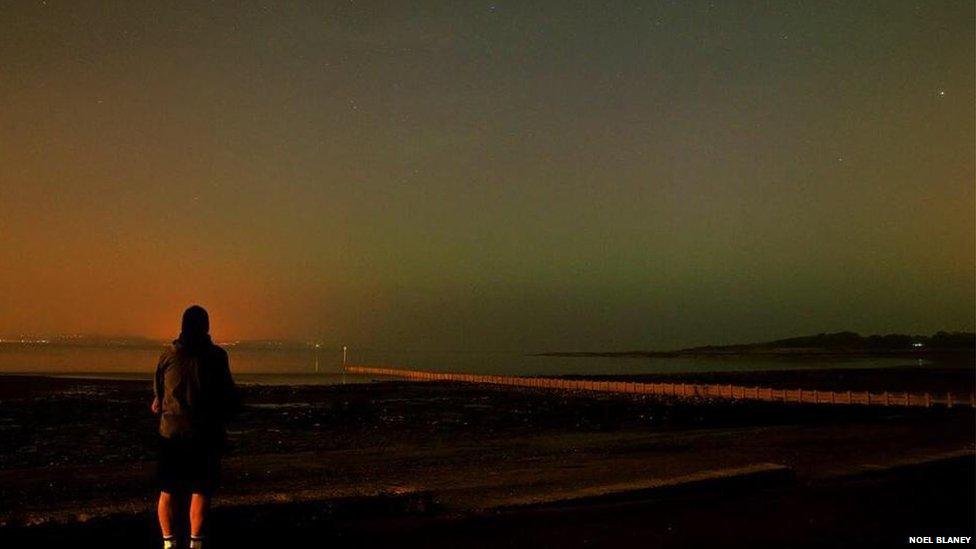
The Northern Lights are caused by the interaction of the solar wind - a stream of charged particles escaping the Sun - and our planet's magnetic field and atmosphere. This photograph was taken at Ballyholme in County Down by Noel Blaney.
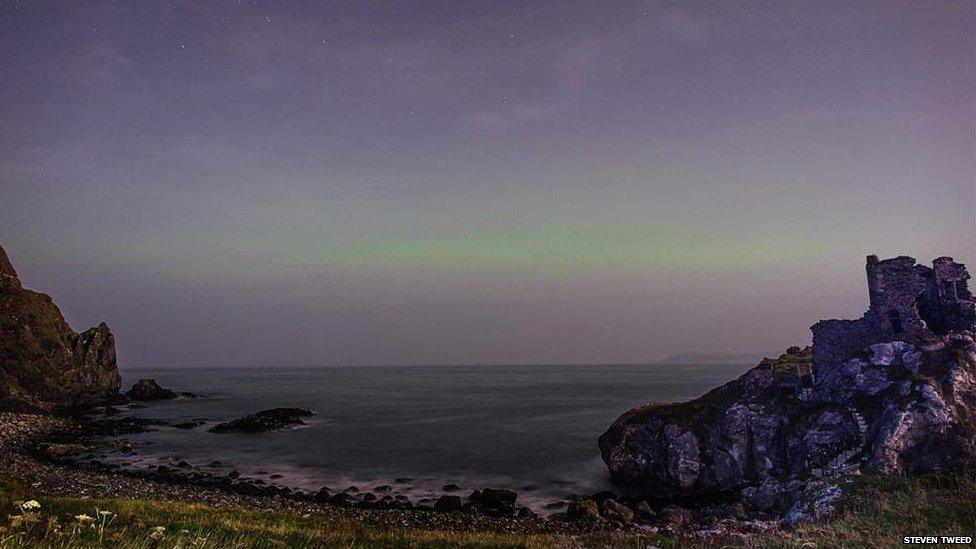
As the solar wind approaches, it distorts the Earth's magnetic field and allows some charged particles from the Sun to enter the Earth's atmosphere at the magnetic north pole and the magnetic south pole. Then, as these charged particles "excite" gases in our atmosphere, they make make them glow - just like gas in a fluorescent tube. Steven Tweed captured a great view of this phenomenon at Kinbane Head, near Ballycastle in County Antrim.
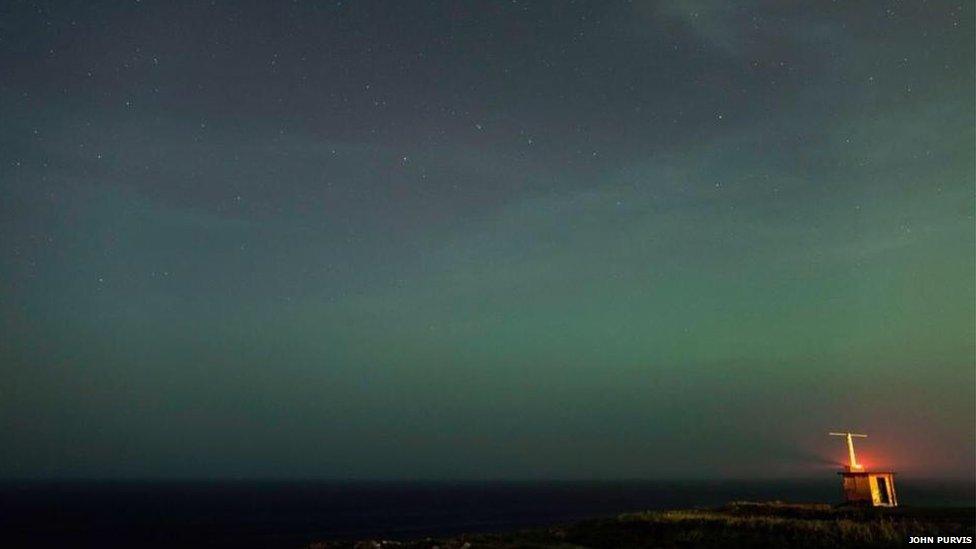
The solar wind can cause the Earth's magnetic field lines to disconnect from our planet. When these field lines "snap back" into position, charged particles from the solar wind are again pushed into the Earth's atmosphere, causing aurora. The more magnetic field lines that disconnect and snap back, the further south the Northern Lights can be seen. John Purvis captured this image at Portstewart, County Londonderry.
.jpg)
To increase the chance of seeing the Aurora Borealis, scientists advise people to sign up to an alert service and head outside at "magnetic midnight" - between 8pm and 12am in the UK - to find a dark place with no light pollution. Alistair Hamill took this spectacular view of Dunluce Castle on the north Antrim coast.
- Published2 January
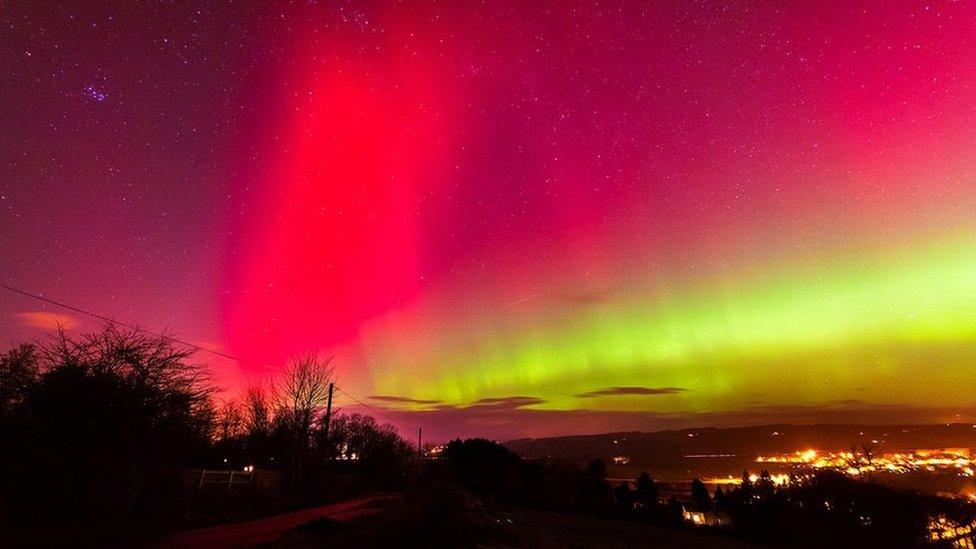
- Published28 February 2014
